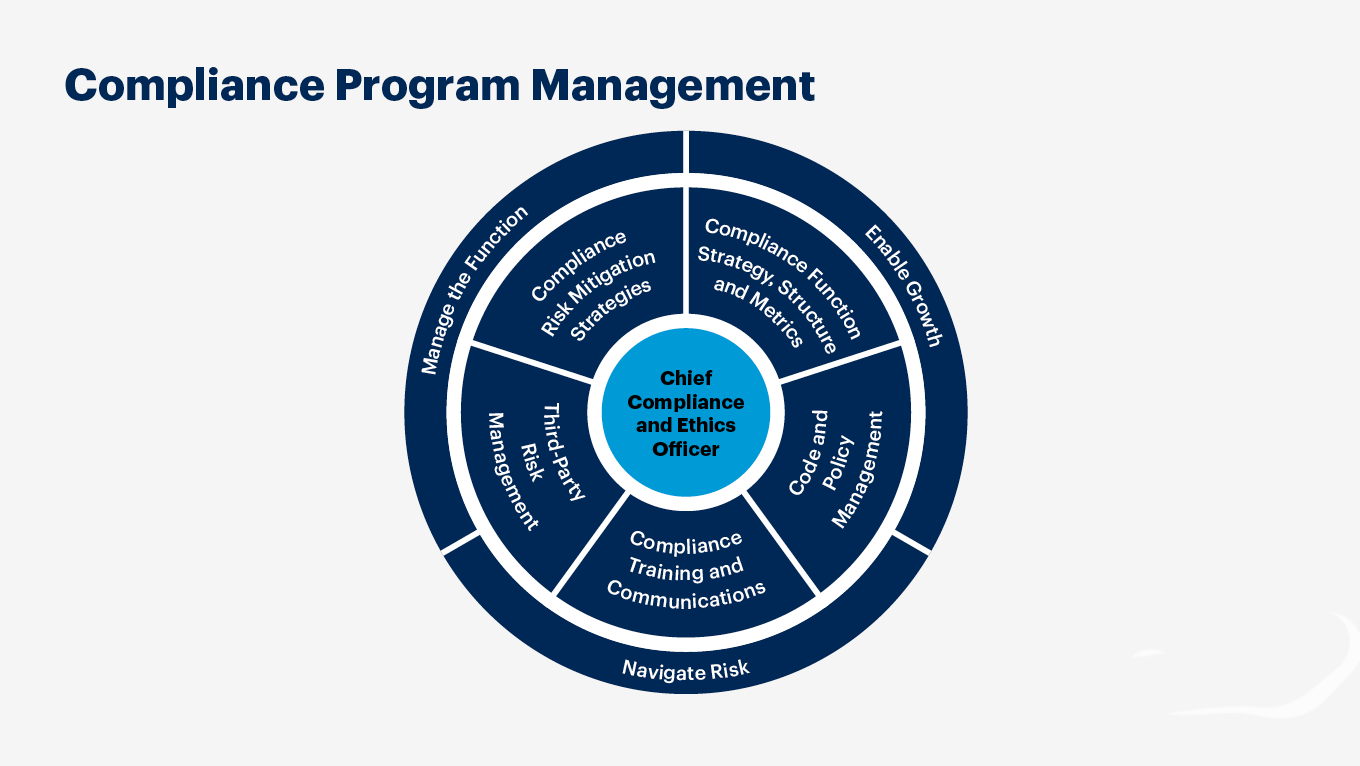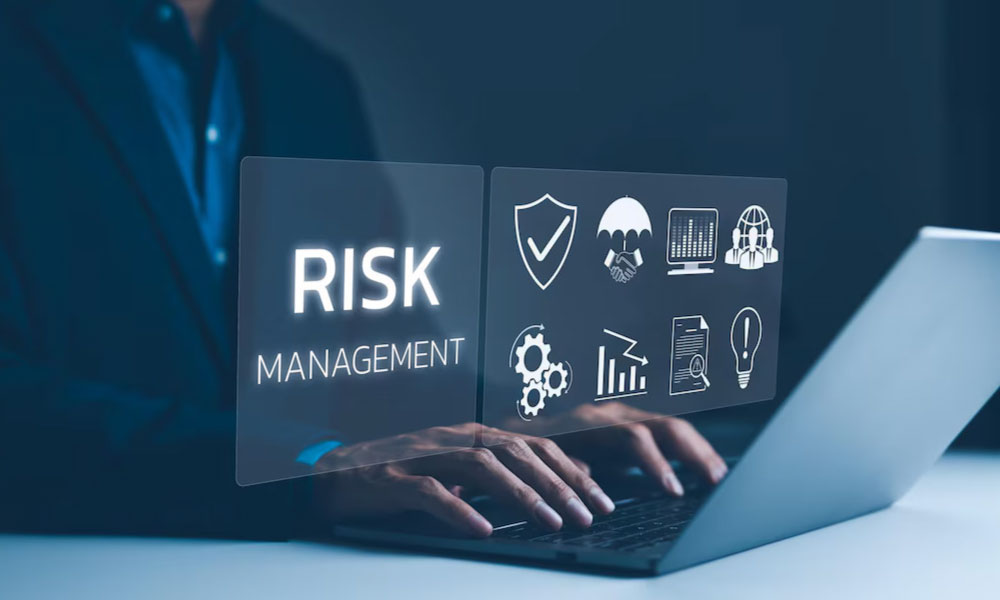
Best Risk Management Software and Tools
Best Risk Management Software and Tools
Effectively managing risk is critical for any organization. It's about proactively identifying potential problems, figuring out how bad they could be, and planning what to do about them. Risk management software and tools help you do all this in one place, automating tasks so you don't have to rely on complicated spreadsheets or scattered notes.
What to Look For in Top Tools:
One Place for All Risks: A central list where you can keep track of every risk, its status, who's in charge of it, and what the plan is.
- Smart Risk Checks: Tools that can figure out how likely a risk is to happen and how big its impact would be. They often use smart technology (like AI) to give you a clearer picture.
- Following the Rules: Features that help you meet various industry standards and laws (like GDPR or ISO 27001). They can even create reports that prove you're compliant.
- Automatic Workflows: These tools can automate everyday tasks, like sending out risk assessments, getting approvals for plans, or collecting proof that you're doing what you said you would.
- Always Watching: They can constantly monitor risks and important numbers, sending you alerts if something new comes up or if things go off track.
- Handling Incidents: Systems to track and solve problems when they happen, connecting them back to your overall risk picture.
- Checking Your Partners: Tools to look at the risks that come from working with other companies (vendors, suppliers), like checking their security or how they handle your data.
- Easy Reports: Clear dashboards and reports that show you the big picture of your risks, perfect for executives or for audits.
- Connects with Other Systems: They can link up with your existing systems (like HR or IT) to share information easily and give you a complete view.
- Managing Your Own Rules: Tools to create, share, and update your company's internal policies, making sure they match your risk goals.
Grows with You: The ability of the software to handle more as your company gets bigger and to be customized for your specific needs.
10 Top Best Risk Management Software
All-in-One GRC Platforms: These are big systems that cover everything: Governance, Risk, and Compliance. Think of names like Risk Cognizance, Archer, MetricStream, and Riskonnect. Many of these now use AI for smarter insights.
10 leading risk management software providers, particularly those integrated into broader GRC platforms, that are highly regarded in 2025:
1. Risk Cognizance GRC Software Platform Risk Cognizance’s GRC Software Platform is designed specifically to empower MSSPs and MSPs with a scalable, multitenant, and flexible solution that supports comprehensive compliance and risk management for multiple clients. Key features include:
- Multitenancy and White-Labeling: Seamlessly manage multiple client environments with customizable, branded interfaces.
- Integrated Frameworks: Pre-packaged compliance content for ISO 27001, NIST CSF, and other leading frameworks.
- Automated Risk Assessments: Conduct risk evaluations across clients with minimal effort.
- Compliance Monitoring: Continuous oversight ensures MSSPs stay ahead of regulatory changes and client compliance requirements.
- Advanced Reporting Tools: Real-time dashboards and customizable reports for transparent communication.
- With these comprehensive features, Risk Cognizance enables MSSPs to streamline their services, improve client outcomes, and build trust through effective risk and compliance management.
- G2 rating: 5/5 Top features: Automate assessment manager for 29+ compliance frameworks, framework crosswalking, risk manager, audit manager, integrations, white label, multi-tenancy, and AI
- Gartner rating: 5/5 Top features: Risk Cognizance rsnrankedked number 3 worlworldwide on Gartner GRC Assurance Leaders.
_1725822920.png)

2. MetricStream: A long-standing leader in the GRC space, known for its comprehensive enterprise GRC platform with strong risk management capabilities, including AI-powered insights and advanced analytics for various risk types (operational, IT, financial).
3. OneTrust: Evolved from its privacy roots into a full-fledged GRC platform, offering robust risk management, particularly strong in privacy, data governance, IT, and third-party risk. Known for its extensive ecosystem and rapid growth.
4. Archer (formerly RSA Archer): A pioneer in integrated risk management (IRM), offering a broad suite of solutions across enterprise, operational, IT, security, and third-party risk management. Highly customizable with a large customer base.
5. LogicGate Risk Cloud: A flexible, no-code GRC platform that empowers organizations to build and automate risk and compliance workflows. It's praised for its user-friendly interface and adaptability for various risk management needs, including third-party and cyber risk.
6. AuditBoard: Focuses on connecting audit, risk, and compliance. It's highly regarded for its intuitive dashboard design, streamlined automation, and ability to simplify complex audit tasks and risk assessments, making it popular with internal audit and compliance teams.
7. ServiceNow GRC: Leveraging its powerful IT service management (ITSM) platform, ServiceNow offers a comprehensive GRC solution that unifies processes, provides real-time insights, and automates risk and compliance workflows across the enterprise.
8. Drata: A rapidly growing platform specializing in continuous compliance automation. While heavily focused on security compliance (SOC 2, ISO 27001), its continuous monitoring and evidence collection capabilities significantly streamline risk management aspects, especially for cloud-native organizations.
9. Riskonnect: Known for its integrated risk management (IRM) software that facilitates interconnected risk management across organizations and third parties. It offers strong capabilities for various risk categories and is highly scalable.
10. Diligent (Diligent One Platform): Provides AI-powered governance, risk, and compliance (GRC) SaaS solutions, particularly strong in board management and entity governance. It helps clarify risk and elevate governance for large organizations.
Cybersecurity Risk Management:
These focus specifically on computer and internet threats. Some tools, like Bitsight and SecurityScorecard, check external security. Others, like Risk Cognizance GRC, offer a wider range of cyber risk management, including checking your cloud security and finding stolen passwords.
Project Risk Management Software: These tools are either part of larger project management systems or standalone like Risk Cognizance. They help you find, analyze, and track risks that are unique to a specific project, like budget overruns or delays. Examples include Wrike and ProjectManager.com, and some features within tools like Jira.

Project Risk Management Tools
Project risk management software tools are essential for steering projects clear of potential pitfalls. They help project managers:
- Find Risks: Brainstorm and list specific risks related to the project's goals, timeline, money, and resources.
- Figure Out Impact: See how likely a risk is to happen and what kind of problems it could cause (like extra costs or delays).
- Plan What to Do: Create strategies to avoid the risk, lessen its impact, transfer it to someone else (like insurance), or accept it.
- Keep an Eye On It: Continuously watch the risks, any events that might trigger them, and whether your plans are working throughout the project.
- Report Progress: Create lists of risks and visual charts for everyone involved to see.
- Many general project management software options now include strong risk management features.
Risk Management Plan
A risk management plan is a formal document that lays out how your organization will handle risks. It's super important for good risk oversight. A solid plan usually includes:
Key Parts of a Risk Management Plan:
- What It's About: Explains the purpose of the plan and what kinds of risks it covers (company-wide, specific projects, IT risks, etc.).
- Who Does What: Clearly says who is responsible for different parts of managing risk.
- How to Find Risks: Describes the methods you'll use to spot risks (like brainstorming or looking at past problems).
- How to Understand Risks: Explains how you'll figure out how likely a risk is and how bad its impact would be.
- How to Handle Risks: Details your strategies:
- Avoid: Stop doing the activity that causes the risk.
- Lessen: Reduce the chance of the risk happening or its impact.
- Transfer: Pass the risk to someone else (e.g., insurance).
- Accept: Decide to live with the risk, often with a backup plan.
- Keeping Watch: How you'll constantly monitor risks and identify new ones. This includes setting up early warning signs (Key Risk Indicators).
- Talking About Risks: How you'll share risk information with others, how often, and what will be in the reports.
- Risk List (Registers): The detailed list of risks, including their status and what you're doing about them.
- Money and People: How you'll allocate resources for risk management.
Tips for a Great Risk Management Plan:
- Be Prepared: Find risks early, before they become problems.
- Cover Everything: Think about all types of risks (big picture strategy, daily operations, money, rules, cyber, environment).
- Keep It Fresh: Your plan should be a living document, regularly reviewed and updated as things change.
- Link to Your Goals: Make sure risk management supports your company's overall aims.
- Get Everyone Involved: Encourage all employees to help spot and manage risks.
- Use Technology: Utilize risk management software to make your plan easier to carry out.

Tools to Manage Risk
Beyond full software systems, there are many methods and specific tools to manage risk, from simple ideas to complex analysis:
Common Tools & Methods:
- Risk Lists (Registers): A fundamental tool, often a spreadsheet or a module within GRC software, listing risks with details like ID, description, owner, likelihood, impact, score, and status.
- Risk Heat Maps: Visual charts that show risks based on their likelihood and impact, often using colors to show how serious they are.
- SWOT Analysis: Helps find your company's Strengths, Weaknesses, Opportunities, and Threats, including potential risks.
- PESTLE Analysis: A way to look at big external factors (like Political, Economic, Social, Technological, Legal, Environmental) that could affect your business.
- Brainstorming: Group meetings to come up with all possible risks.
- Checklists & Templates: Ready-made lists of common risks or forms for doing risk checks.
- Root Cause Analysis: Methods to find the true underlying reasons why problems occur.
- Scenario Planning: Imagining different future situations to understand potential impacts and prepare.
- Key Risk Indicators (KRIs): Numbers that give you an early warning if a risk is growing.
- Audit Trails: Keeping records of all risk management activities for accountability.
- Simulations: Using computer models to predict outcomes and quantify risk, especially in complex projects.
Buyer's Guide
This detailed guide will help you find and buy the right risk management software for you and your business.
The strategic approach to managing potential threats and uncertainties is paramount for any organization striving for sustained success and resilience. In today's dynamic threat landscape, the complexity, velocity, and interconnectedness of risks demand more than manual processes and fragmented tools. This is where a robust risk management solution becomes indispensable.
This detailed guide is engineered to empower you with the knowledge necessary to identify, evaluate, and procure the ideal risk management solution for your unique operational imperatives. It will help you cut through the noise and make a decision that truly fortifies your business against the multifaceted challenges of the modern era.
Last Updated on July 19, 2025
Here's what we'll cover:
What You Need to Know About Risk Management Solutions
Navigating the market for risk management solutions requires a strategic mindset. These are not merely IT procurements; they are foundational investments in your organization's longevity, reputation, and ability to execute its mission. Understanding the strategic value, the core functionalities, and the long-term implications is critical.
Key Takeaways for Buyers:
Beyond Compliance: A modern risk management solution extends far beyond simply checking regulatory boxes. It's about proactive identification, intelligent assessment, and strategic mitigation of threats across all organizational domains.
Integration is Power: Fragmented risk tools create dangerous blind spots. The most effective solutions offer an integrated view of all risk types—operational, financial, cyber, strategic, and third-party—enabling holistic decision-making.
Continuous Vigilance: The risk landscape is dynamic. Your chosen solution must support continuous monitoring, real-time alerting, and agile adaptation to emerging threats, moving away from static, periodic assessments.
Empowerment, Not Burden: The right solution should simplify complex processes, automate repetitive tasks, and empower employees at all levels to contribute to a risk-aware culture, rather than adding to their workload.
Future-Proofing: Look for solutions that are scalable, adaptable, and leverage emerging technologies like AI for predictive analytics, ensuring your investment remains relevant as your organization and the threat landscape evolve.
By approaching the selection process with these strategic considerations, you can ensure your chosen risk management solution genuinely enhances your organization's resilience and competitive advantage.
What Is Risk Management Solution?
A risk management solution is a comprehensive technology platform designed to enable organizations to systematically identify, assess, analyze, evaluate, treat (mitigate), monitor, and report on risks across their entire enterprise. It centralizes risk-related data, automates workflows, and provides analytical tools to offer a unified, real-time view of an organization's risk exposure.
Fundamentally, a risk management solution supports the entire risk lifecycle, moving organizations from reactive firefighting to proactive, intelligence-driven risk optimization. It transforms disparate risk information into actionable insights, helping leadership make informed strategic decisions that balance risk and opportunity.
Essential Features of Risk Management Solutions
The efficacy of a risk management solution hinges on its core capabilities. Look for a solution that offers a robust suite of features designed for comprehensive, integrated risk oversight:
Centralized Risk Register/Repository:
- A single, unified database for all identified risks across the enterprise.
- Includes risk descriptions, categories, ownership, impact, likelihood, and current status.
- Enables cross-functional visibility and consistent terminology.
Risk Assessment and Analysis Tools:
- Supports qualitative and quantitative risk assessment methodologies.
- Includes customizable risk scoring, heat maps, and matrices for visualization.
- Enables scenario analysis and "what-if" modeling to understand potential impacts.
Control Management and Monitoring:
Ability to define, document, and map controls to specific risks and compliance requirements.
- Automated control testing, monitoring, and effectiveness tracking.
- Provides real-time insights into control performance.
Issue and Incident Management:
- Streamlined processes for logging, tracking, investigating, and resolving risk-related incidents, breaches, and control failures.
- Automated workflows for escalation, notification, and corrective action planning.
Risk Mitigation and Treatment Planning:
- Tools to develop, assign, and track risk mitigation strategies and action plans.
- Includes due dates, responsibilities, and progress monitoring.
Reporting and Dashboards:
- Customizable, real-time dashboards providing a comprehensive overview of the risk landscape.
- Robust reporting capabilities for various stakeholders (e.g., executive leadership, board, auditors).
- Visualizations of risk trends, key risk indicators (KRIs), and control performance.
Integration Capabilities:
- Seamless integration with existing enterprise systems (e.g., ERP, HRIS, IT security tools, compliance platforms).
- Enables automated data import/export and a unified view of interconnected GRC data.
Third-Party Risk Management (TPRM):
- Manages the risks associated with vendors, suppliers, and other third parties.
- Includes automated due diligence, assessment questionnaires, and continuous monitoring of third-party security posture.
Policy Management:
- Centralized management of internal policies related to risk, security, and compliance.
- Automated policy lifecycle management, version control, and attestation tracking.
Audit Management Support:
- Facilitates internal and external audits by providing centralized, auditable records of risk management activities and control performance.
- Streamlines evidence collection and audit response.
Scalability and Flexibility:
- Ability to scale with organizational growth and adapt to evolving risk management needs and methodologies.
- Configurable workflows and templates to suit specific industry or operational requirements.
User Management and Access Control:
- Role-based access controls to ensure appropriate data access and segregation of duties.
- Support for multiple users and collaborative workflows.
- These essential features combine to create a powerful platform that moves organizations from fragmented risk management to a holistic, proactive, and resilient posture.
Benefits and Competitive Advantages of Using Risk Management Solutions
Implementing a robust risk management solution is a strategic investment that yields transformative benefits and significant competitive advantages:
Enhanced Enterprise Resilience:
- Provides a holistic understanding of interconnected risks, enabling proactive defense.
- Strengthens the organization's ability to anticipate, withstand, and recover from disruptions.
Superior Strategic Decision-Making:
- Delivers real-time, consolidated risk intelligence to leadership.
- Empowers informed decisions that balance risk and opportunity, aligning actions with strategic objectives.
Optimized Resource Allocation:
- Identifies the most critical risks, ensuring resources are strategically deployed where they have the greatest impact.
- Eliminates redundant efforts and increases operational efficiency across GRC functions.
Unassailable Compliance & Reputation:
- Automates compliance tracking and control mapping, reducing the risk of non-compliance penalties.
- Demonstrates a robust commitment to security and integrity, building trust with customers, partners, and regulators.
Streamlined Audits & Assured Governance:
- Centralizes auditable records and automates evidence collection, significantly reducing audit preparation time and costs.
- Provides clear accountability and transparency in risk governance.
Proactive Threat Neutralization:
- Leverages continuous monitoring and analytical capabilities to detect emerging threats and vulnerabilities early.
- Enables rapid response and mitigation, minimizing potential impact.
Cost Efficiency & ROI:
- Reduces operational overhead by automating manual tasks.
- Minimizes financial losses from unmanaged risks, breaches, and regulatory fines, delivering a compelling return on investment.
Competitive Differentiation:
Organizations with mature, integrated risk management capabilities gain a significant edge in the marketplace.
- It signals stability, reliability, and trustworthiness to all stakeholders.
- A well-chosen risk management solution transforms risk from a reactive burden into a catalyst for confident growth and sustainable value.
How to Choose the Best Risk Management Solution
Selecting the optimal risk management solution requires a meticulous, strategic approach. Consider these critical factors during your evaluation process:
Define Your Specific Needs and Scope:
- What types of risks are most critical? (e.g., cyber, operational, financial, ESG, third-party)
- What are your immediate pain points? (e.g., audit fatigue, lack of visibility, manual processes)
- What is your desired level of integration? (e.g., just risk, or full GRC)
- What frameworks or regulations are you targeting? (e.g., NIST, ISO 27001, SOC 2, GDPR)
- What is your current risk management maturity level?
Assess Integration Capabilities:
- Can the solution seamlessly integrate with your existing IT infrastructure (e.g., HR, ERP, IAM, SIEM, ticketing systems)?
- Does it offer APIs for custom integrations?
- A truly integrated solution prevents data silos and enables a holistic risk view.
Evaluate User Experience (UX) and Adoption:
- Is the interface intuitive and user-friendly for all levels of users, from executives to frontline employees?
- Does it offer customizable dashboards and reporting that resonate with different stakeholders?
- A complex or unwieldy system will lead to low adoption and hinder its effectiveness.
Consider Scalability and Flexibility:
- Can the solution grow with your organization's evolving needs, increasing user counts, and expanding operations?
- Is it configurable without extensive coding, allowing you to adapt processes and methodologies?
- Can it support new risk types or regulatory frameworks as they emerge?
Robust Reporting and Analytics:
- Does it provide real-time, actionable insights through customizable dashboards?
- Does it offer predictive analytics or AI capabilities for early warning of emerging risks?
- Can it generate comprehensive, audit-ready reports tailored to various audiences?
Vendor Reputation and Support:
- Investigate the vendor's industry reputation, experience, and financial stability.
- Assess their customer support model, training programs, and implementation services.
- Does the vendor offer ongoing thought leadership and product evolution?
Security and Compliance of the Solution Itself:
- Given the sensitive nature of risk data, ensure the vendor's platform adheres to stringent security standards (e.g., ISO 27001, SOC 2).
- Where is the data hosted, and what are their data privacy practices?
Total Cost of Ownership (TCO):
Beyond initial licensing fees, consider implementation costs, training, ongoing support, maintenance, and potential customization expenses.
Weigh the TCO against the potential benefits and avoided costs (e.g., fines, breaches).
Look for Automation Capabilities:
- Does it automate manual tasks like evidence collection, control testing, incident routing, and regulatory change tracking?
- Automation is key to efficiency, accuracy, and continuous monitoring.
By meticulously evaluating these factors, you can make an informed decision that secures a risk management solution perfectly aligned with your strategic objectives and operational realities.
Solutions Related to Risk Management
A robust risk management capability is often part of a broader Governance, Risk, and Compliance (GRC) framework. While a core risk management solution focuses specifically on the risk lifecycle, it frequently interacts with or is part of an integrated platform that includes:
Compliance Management Solution:
- Manages adherence to laws, regulations, and internal policies.
- Connects compliance obligations directly to underlying risks and controls, enabling integrated reporting.
IT & Cyber Risk Management Solution:
- Specializes in identifying, assessing, and mitigating risks specific to information technology and cybersecurity.
- Integrates deeply with IT systems for vulnerability management, security control assessment, and incident response.
Vendor Risk Management Solution:
- Focuses on assessing and managing risks introduced by third-party suppliers and partners.
- Essential for understanding supply chain risk and extending your risk management framework beyond your immediate organizational boundaries.
Internal Audit Management Solution:
- Streamlines the internal audit process, from planning and execution to reporting and follow-up.
- Leverages risk data to prioritize audit scope and assesses the effectiveness of risk controls.
Policy Management Solution:
- Manages the lifecycle of internal policies and procedures.
- Ensures that risk management policies are consistently applied, understood, and adhered to across the organization.
Business Continuity and Disaster Recovery (BCDR) Solution:
- Focuses on planning for and responding to disruptions to critical business operations.
- Often relies on risk assessments to identify potential scenarios and their impact.
- An integrated GRC platform, like that offered by Risk Cognizance, seamlessly combines these capabilities. This ensures a truly holistic view of your organization's governance, risk, and compliance posture, eliminating silos and enhancing overall resilience.
More Resources for Your Risk Management Journey
The journey to mature and optimize your risk management capabilities is continuous. Leverage these additional resources to deepen your understanding and ensure ongoing excellence:
Industry Frameworks and Standards:
- ISO 31000: International standard for risk management, providing principles and guidelines.
- COSO Enterprise Risk Management (ERM) Framework: Guidance on managing risk to achieve organizational objectives.
- NIST Risk Management Framework (RMF): Particularly relevant for cybersecurity risk management.
- PCI DSS, HIPAA, GDPR, SOC 2: Industry-specific compliance frameworks that necessitate robust risk management.
- Professional Associations:
- RIMS (Risk and Insurance Management Society): Offers resources, training, and networking for risk professionals.
- ISACA (Information Systems Audit and Control Association): Provides guidance on IT governance, risk, and security.
- OCEG (Open Compliance & Ethics Group): Develops GRC standards and best practices.
Look for industry-specific webinars and whitepapers from leading GRC solution providers (like Risk Cognizance), cybersecurity firms, and consulting groups.
These often provide insights into emerging trends, best practices, and practical implementation strategies.
Review case studies from organizations similar to yours that have successfully implemented risk management solutions.
Learn from their challenges and successes.
Consulting Services:
Consider engaging with GRC or risk management consultants for expert guidance on strategy, implementation, and program maturity.
By continuously engaging with these resources, you can ensure your risk management strategy remains agile, effective, and aligned with the evolving demands of the global business environment.
By combining smart methods with modern risk management software and a clear plan, companies can handle uncertainty better and become more resilient.


